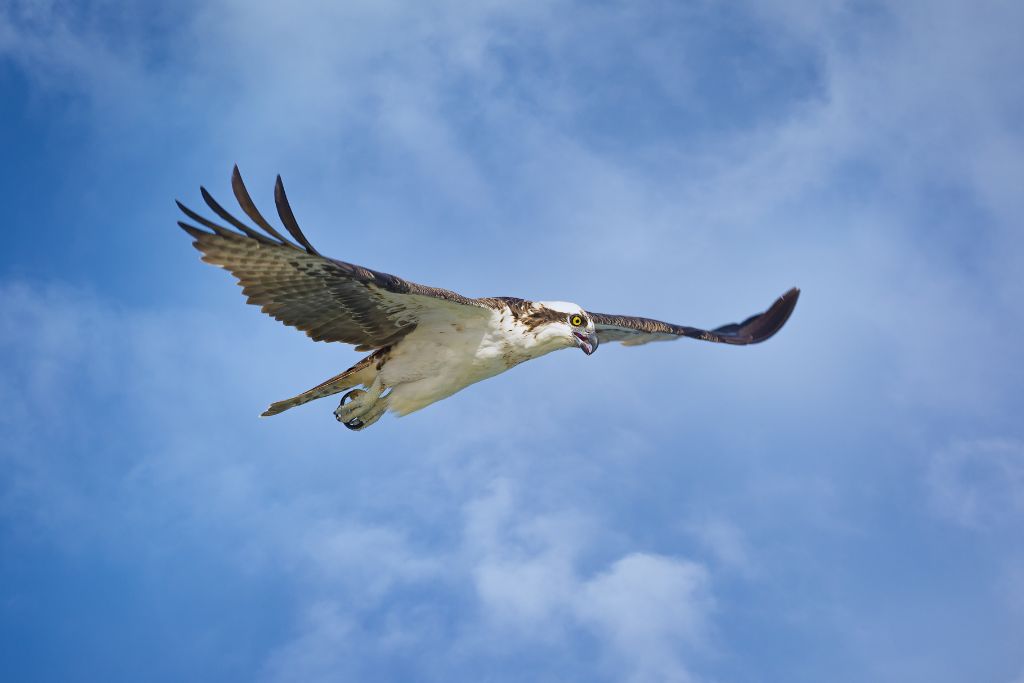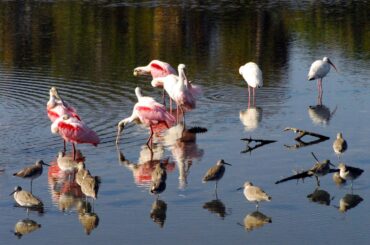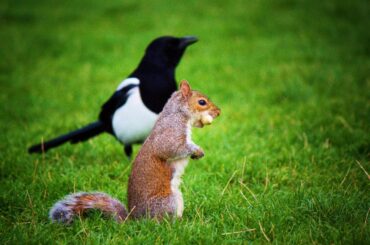Have you ever thought about the beautiful birds that live in Florida? This article will tell you about 27 beautiful raptors that live in Florida and their secrets. Are you interested in finding out which strong Florida hunters rule the skies? Join in!
Birds of prey do well in all of Florida’s different ecosystems, flourishing in the state’s unique mix of woods, lakes, and the coast. The varied landscape of Florida is home to many birds, from the majestic bald eagle to the sneaky peregrine falcon. These birds keep the ecosystem balanced by controlling the numbers of rodents and other small animals.
Raptors in Florida come in various sizes and look to fit their environment. Florida has many animals, from the osprey, whose beak can catch fish, to the red-shouldered hawk, which hunts in the woods. Knowing how vital Florida’s birds of prey are to the state’s ecosystems sheds light on its fragile wild areas.
27 Predatory Birds of Florida
Let’s admire the amazing 27 species of birds of prey that live in Florida’s skies. Every bird in Florida’s forests, from the powerful golden eagle to the quick peregrine falcon, has a specific job to keep the ecosystem in balance. Now, let’s look into more interesting facts about these magnificent birds.
1. American Kestrel (Falco sparverius)
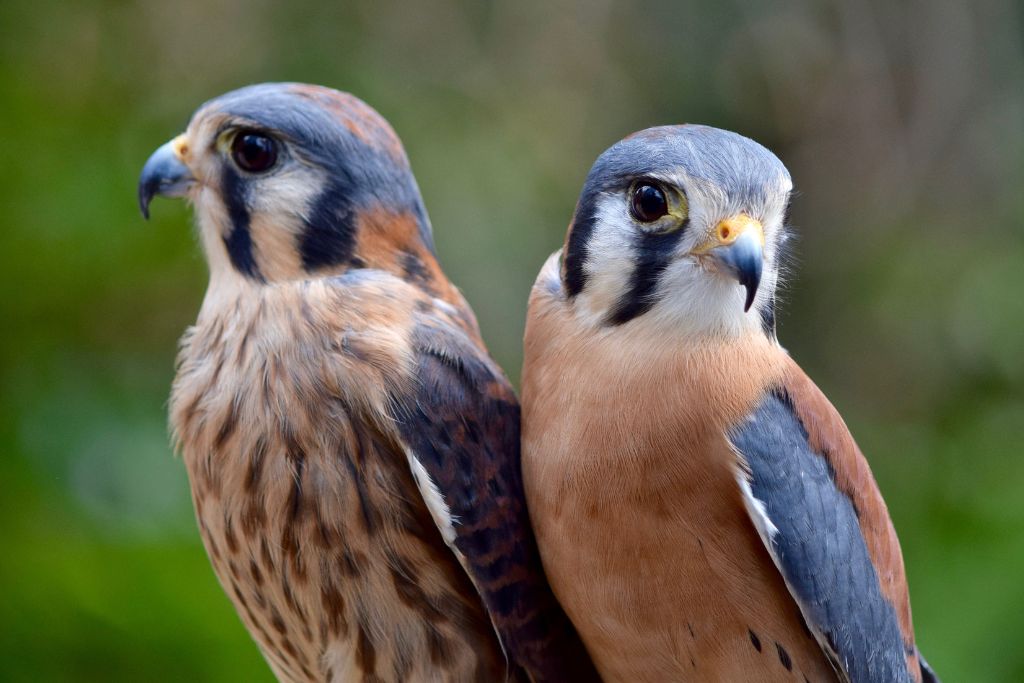
A 20-inch-winged powerhouse, the American kestrel is Florida’s smallest bird. These birds prefer wide spaces and eat bugs, small animals, and other birds. While hunting, kestrels hover over their food and catch it quickly. These birds control bug populations in Florida’s woodlands. They nest in tree holes or discarded nests.
2. Golden Eagle (Aquila chrysaetos)

The golden eagle symbolizes power and strength with its 7-foot wingspan. These birds are good hunters who eat small animals and birds and prefer wide spaces. Golden eagles can see well and fly high to gather food from afar. These top predators balance nature and safeguard Florida’s woods from rodents.
3. Bald Eagle (Haliaeetus leucocephalus)

Bald eagles are Florida’s most recognizable birds of prey with their white heads and tails. These birds are formidable hunters with 6 to 7-foot wings. Fish are their main diet, and they live near water. Bald eagles hunt well with strong claws and eyesight. Florida’s woodlands benefit from these majestic eagles’ management of fish and small mammals, which maintains ecological equilibrium.
4. Peregrine Falcon (Falco peregrinus)

Peregrine falcons fly rapidly in Florida. These birds are outstanding hunters and can dive above 240 mph. Their wingspan is 2 to 3 feet. Bird-eating peregrine falcons are known for stooping to catch their prey in the air. Florida’s woodlands depend on these falcons to control lesser birds and maintain the ecology. They nest on city cliffs or high structures.
5. Barred Owl (Strix varia)

Medium-sized barred owls can expand their wings to 3 to 4 feet. These nighttime hunters eat tiny mammals, birds, and frogs. To attract prey, barred owls hoot “who-cooks-for-you.” They wait, studying their surroundings before moving. These owls nest in tree holes and control rodents in Florida’s woodlands. This balances nature’s complicated network.
6. Merlin (Falco columbarius)

Merlins are active in Florida. They are small, fast falcons with wings that are 2 feet wide. Due to their fast, acrobatic flight, merlins make great hunts in the sky. Most of the time, they eat small birds. To keep things in balance, they control the numbers of Florida’s woodland songbirds and small birds. They build their nests on rocks or in the empty nests of other birds.
7. Black Vulture (Coragyps atratus)
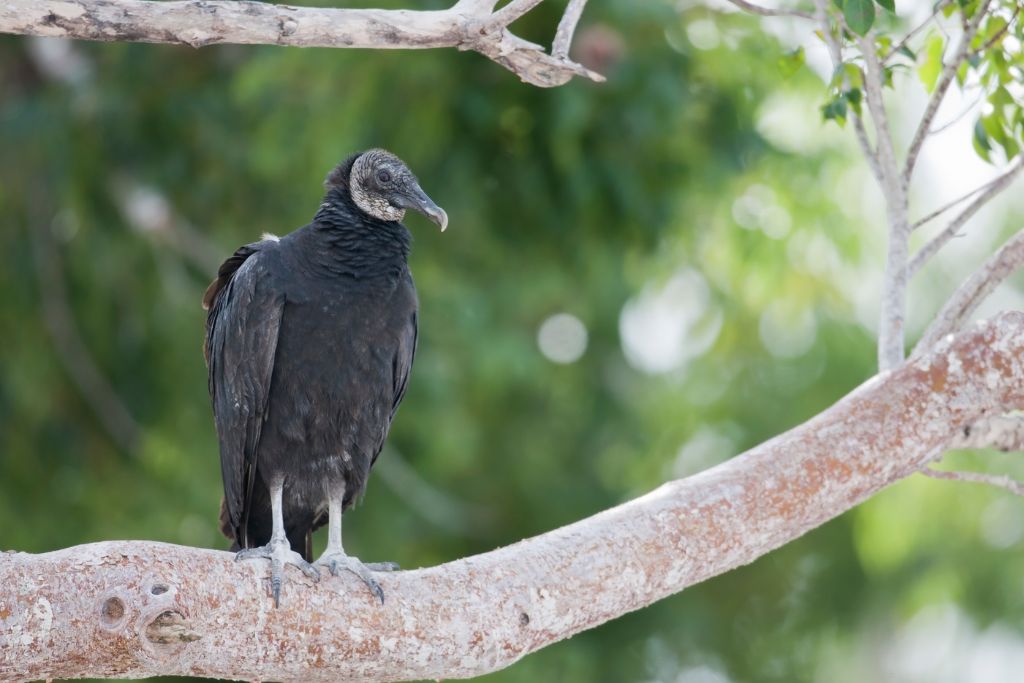
The black vulture has wings that are 5 to 6 feet long. Florida’s environment depends on animals that eat dead animals. With their bald heads, black vultures clean up their environment and help keep the ecosystem healthy. Their great hunting stops diseases from spreading from dead animals, which is good for Florida’s forests.
8. Sharp-Shinned Hawk (Accipiter striatus)
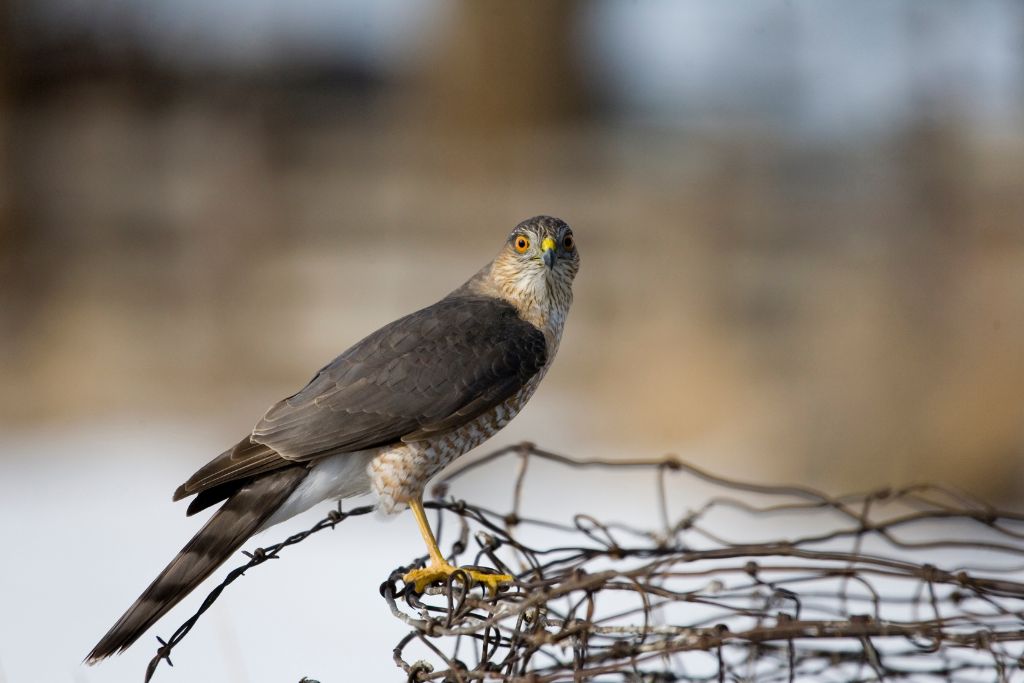
The sharp-shinned hawk has 2-foot wings but fights fiercely. Agility and speed are hallmarks of these hawks. Sharp-skinned hawks sneak through thick undergrowth to get their prey. By controlling songbirds and small mammals, they help maintain Florida’s woods’ fragile ecological balance.
9. Broad-Winged Hawk (Buteo platypterus)
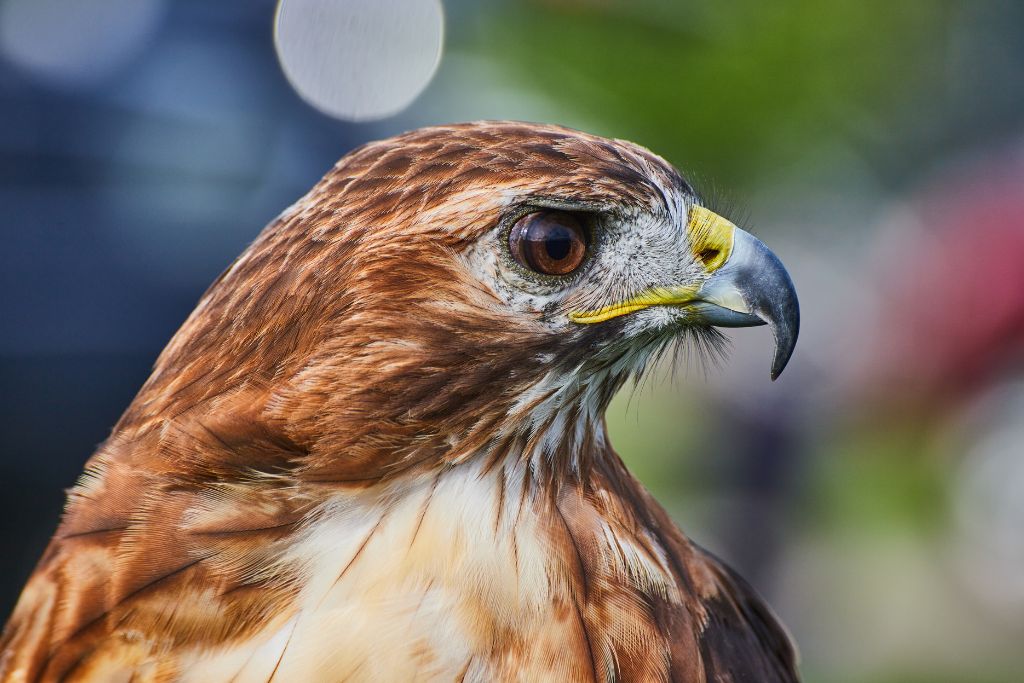
Medium-sized hawks with 2 to 3-foot wings, these birds are adept at hunting insects, snakes, and small mammals. Broad-winged hawks have high-pitched calls and “kettling,” in which birds form large groups that whirl around each other during migration. They control rodents and insects in Florida’s woodlands to maintain equilibrium. They nest in dense forest undergrowth.
10. Cooper’s Hawk (Accipiter cooperii)

Cooper’s hawks are fast, quick hunters with 2 to 3-foot-long wings. In the woods, these hawks hunt birds and small animals. To catch, Cooper’s hawks sneak up on their prey and hide in trees. By building their nests in trees, they keep the environment in balance and control the number of birds that live in Florida’s forests.
11. Great Horned Owl (Bubo virginianus)

The majestic great horned owl, with 3 to 5-foot wings, is a powerful hunter of birds, pets, and skunks. Great horned owls do not only hoot, but they can also fly softly to surprise their prey. They keep rodents and other nighttime animals in check, keeping Florida’s woods biologically balanced. Trees and abandoned nests are where they nest.
12. Short-Tailed Hawk (Buteo brachyurus)
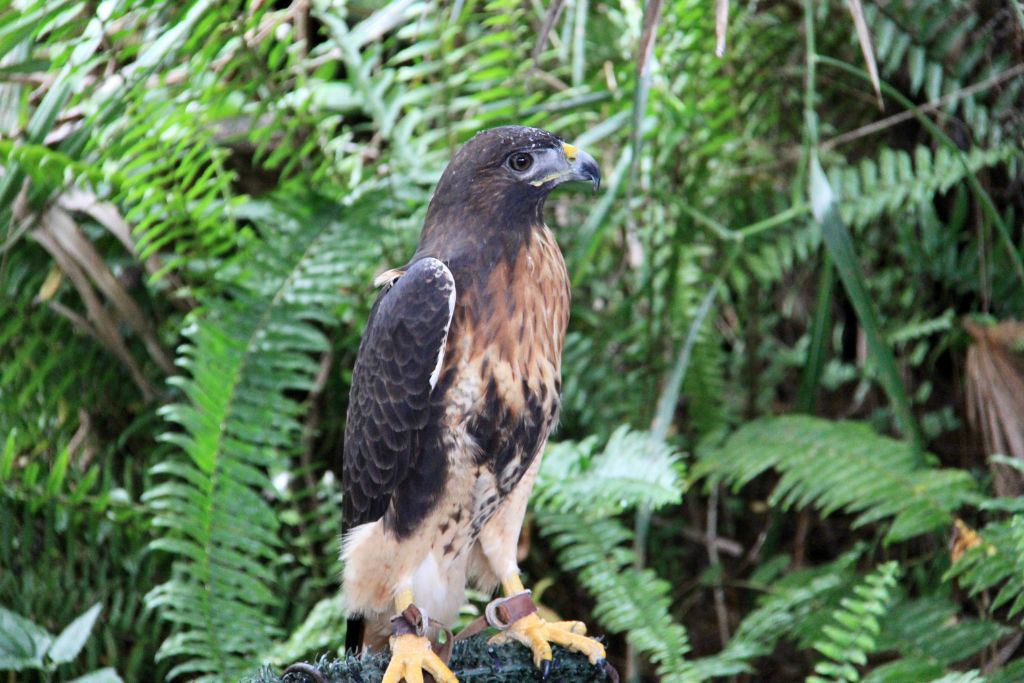
Small short-tailed hawks can expand their wings to 3 feet. These hawks prefer open spaces and eat tiny birds. Short-tailed hawks have distinctive pale and dark colors. Amazing soaring flights and thermals help them find food. Songbird-control maintains Florida’s woodland equilibrium. They nest in tall palms or trees.
13. Limpkin (Aramus guarauna)
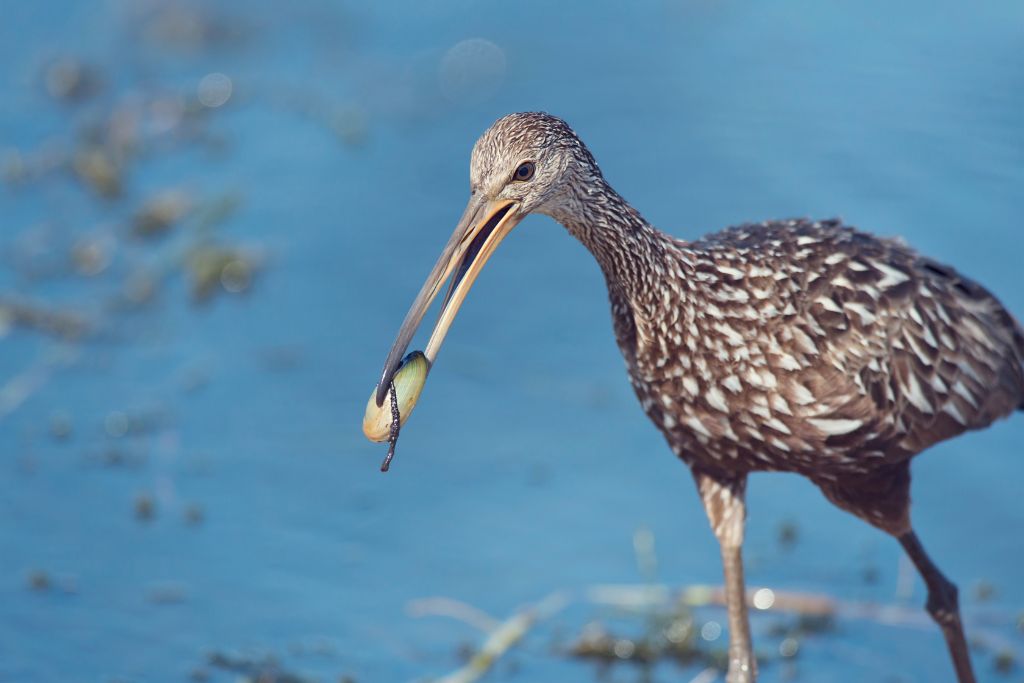
This rare bird resembles a crane and a rail and has 3 to 4-foot wings. Limpkins are vital to wetland ecosystems because they eat freshwater snails. Their distinctive wailing calls alert you to their presence in the wetlands. Florida woodlands need limpkins to reduce snail numbers, maintain wetland quality, and balance the environment. They nest in water-side trees or bushes.
14. Red-Tailed Hawk (Buteo jamaicensis)
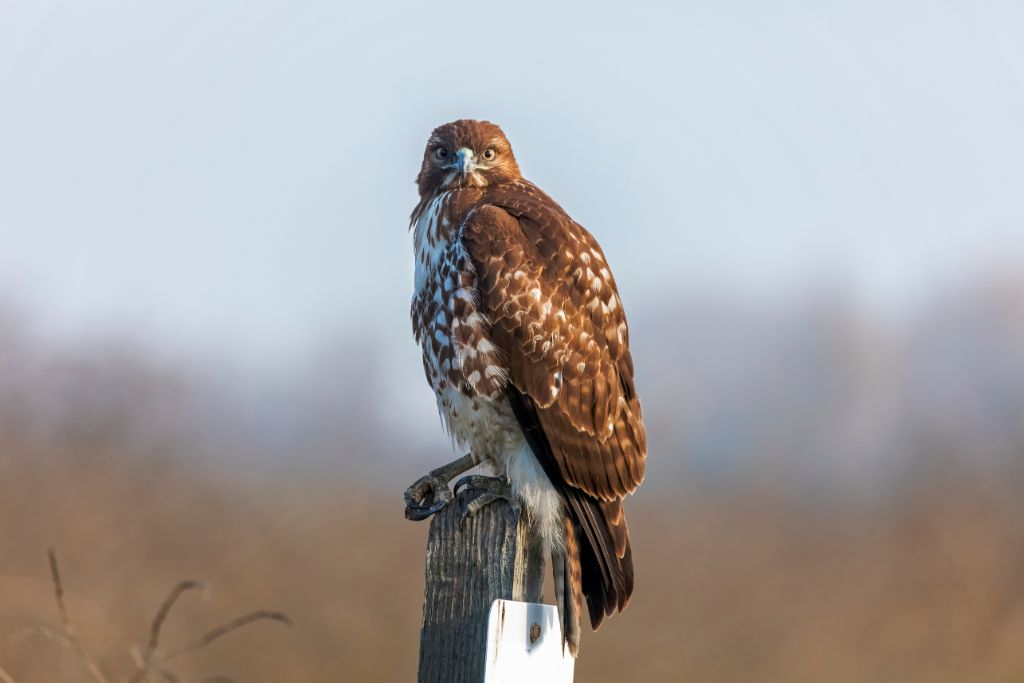
Red-tailed hawks are large, muscular hawks with a 4-foot wingspan. These hawks consume rodents, birds, and mammals, and they exist in many places. Red-tailed hawks use their sharp claws to prey. Their tail feathers distinguish them. They control rodents to preserve Florida’s woods. Trees and cliffs are where they nest.
15. Mississippi Kite (Ictinia mississippiensis)
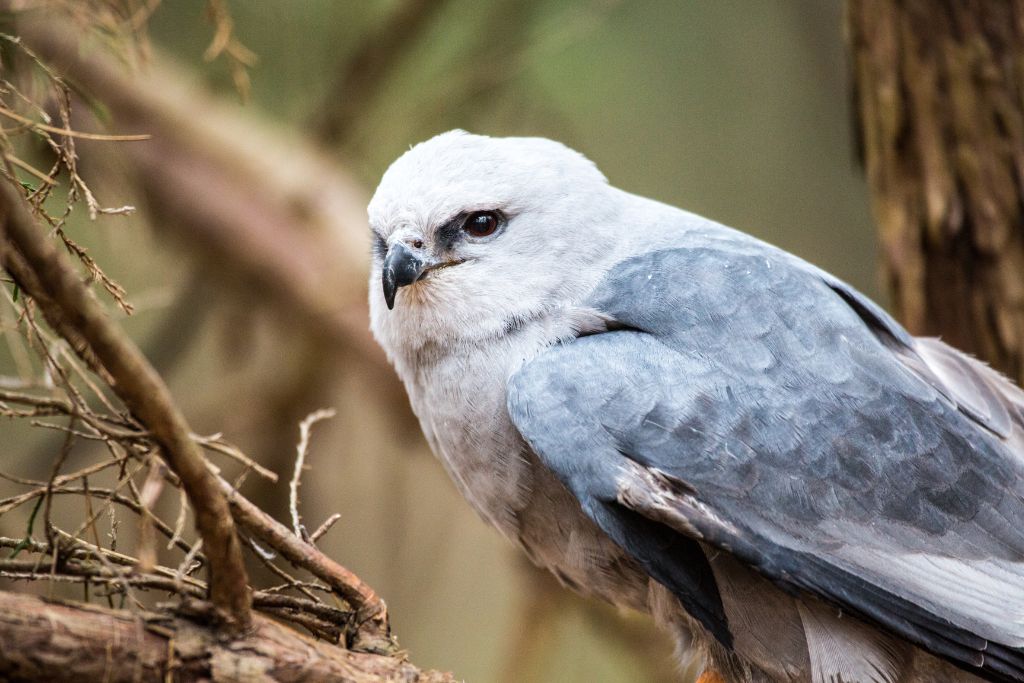
Beautiful Mississippi kites can grow to 2 to 3-foot in wingspan. Their powerful talons snag insects midair, which these agile predators eat. Mississippi kites regulate insect populations in Florida’s woodlands, balancing the ecosystem with their beautiful and acrobatic soaring. They construct nests in trees and contribute to the region’s rich wildlife, maintaining ecological equilibrium.
16. Red-Shouldered Hawk (Buteo lineatus)
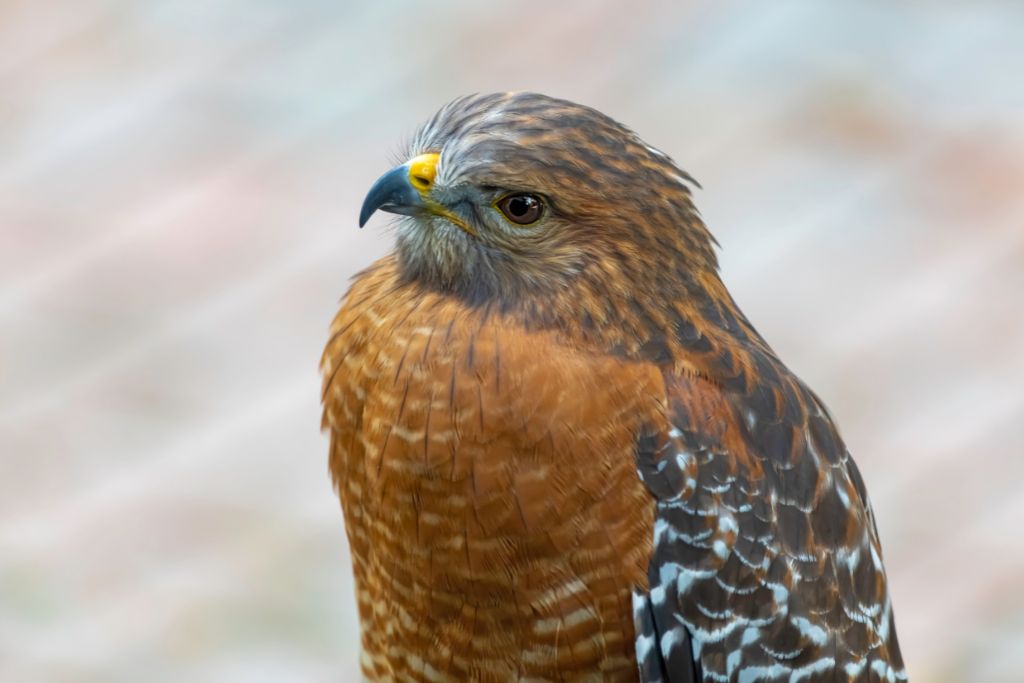
The red-shouldered hawk has 2 to 3-foot wings. This hawk hunts small animals, reptiles, and frogs. The unusual reddish brown color of red-shouldered hawk shoulders makes them easy to distinguish. They prefer wooded regions near water and large trees for nesting. They wait on a limb for their food before swooping. They control tiny animal populations in Florida’s woodlands, keeping the ecosystem healthy and tranquil.
17. Osprey (Pandion haliaetus)

This bird of prey has 5 to 6-foot wings. These professional fish hunters dive from the sky. Ospreys nest on water platforms, demonstrating their adaptability to coastal settings. They hunt well by floating and jumping into the water to catch fish with their claws. Ospreys control fish populations in Florida’s woodlands. This preserves water ecosystems and their animals.
18. Turkey Vulture (Cathartes aura)
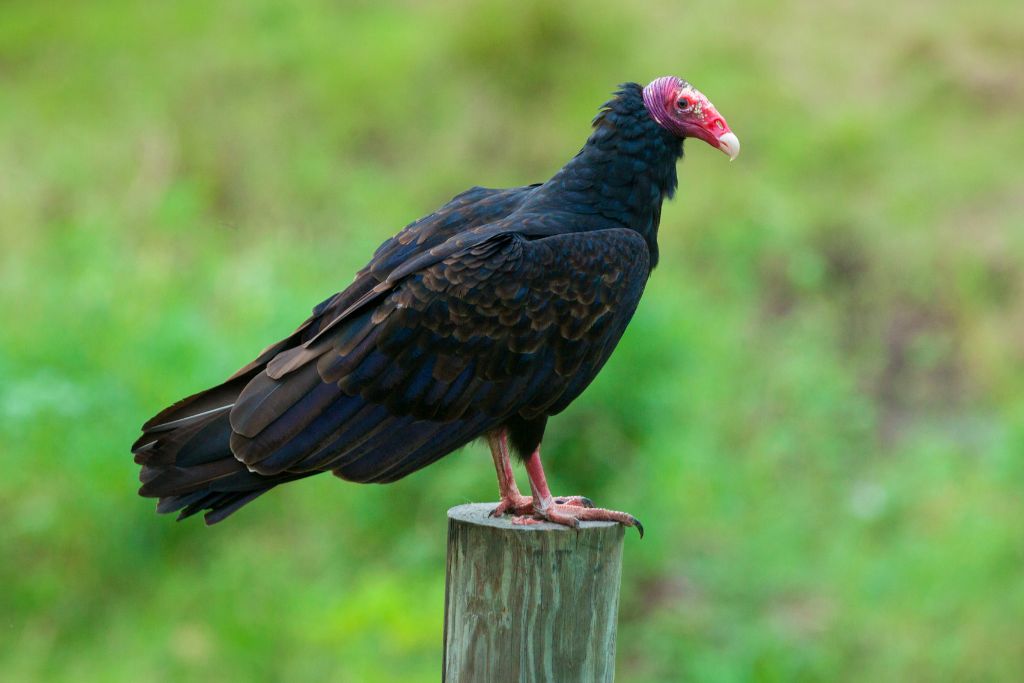
Turkey vultures, which are 5 to 6 feet tall, are rare. These scavengers clean up the habitat by devouring dead animals.
Turkey vultures use their excellent sense of smell to find prey in flight. They have featherless redheads and black feathers. They promptly devour and collect deceased animals in hidden nests to prevent disease transmission. They also clean and maintain Florida’s forests.
19. Peregrine Falcon (Falco peregrinus)
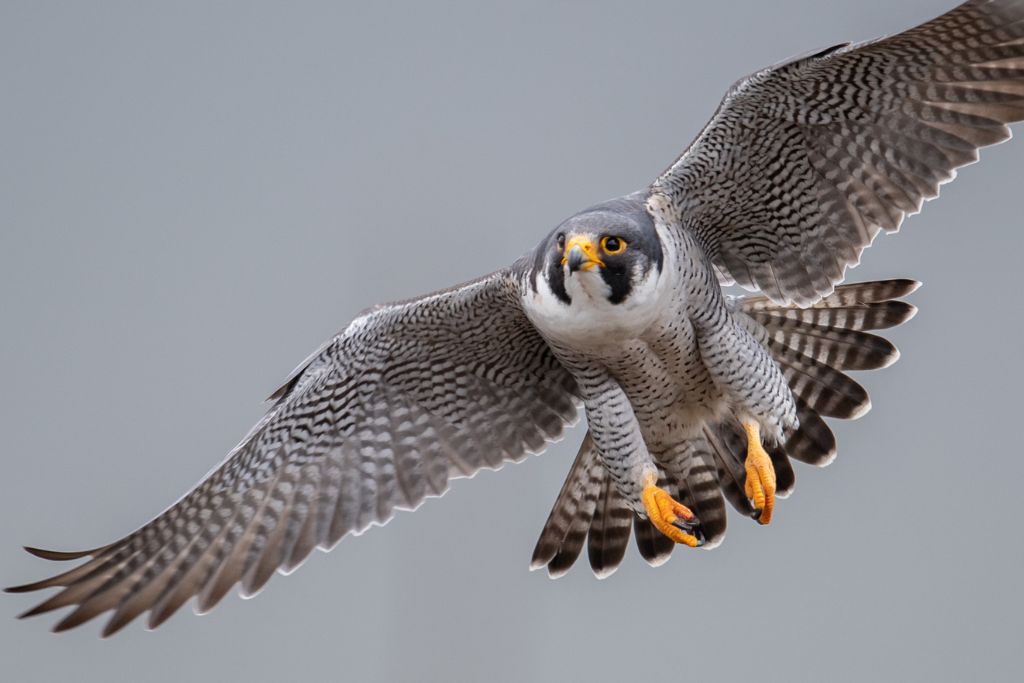
The strong peregrine falcon has a 3-foot wingspan. The fastest bird in the world, the peregrine falcon eats several birds while flying. These dark-marked falcons nest on rocks and lofty buildings. For fast meals, they dive at great speeds. They control bird populations in Florida’s woodlands, maintaining a diversified ecology.
20. Swallow-Tailed Kite (Elanoides forficatus)
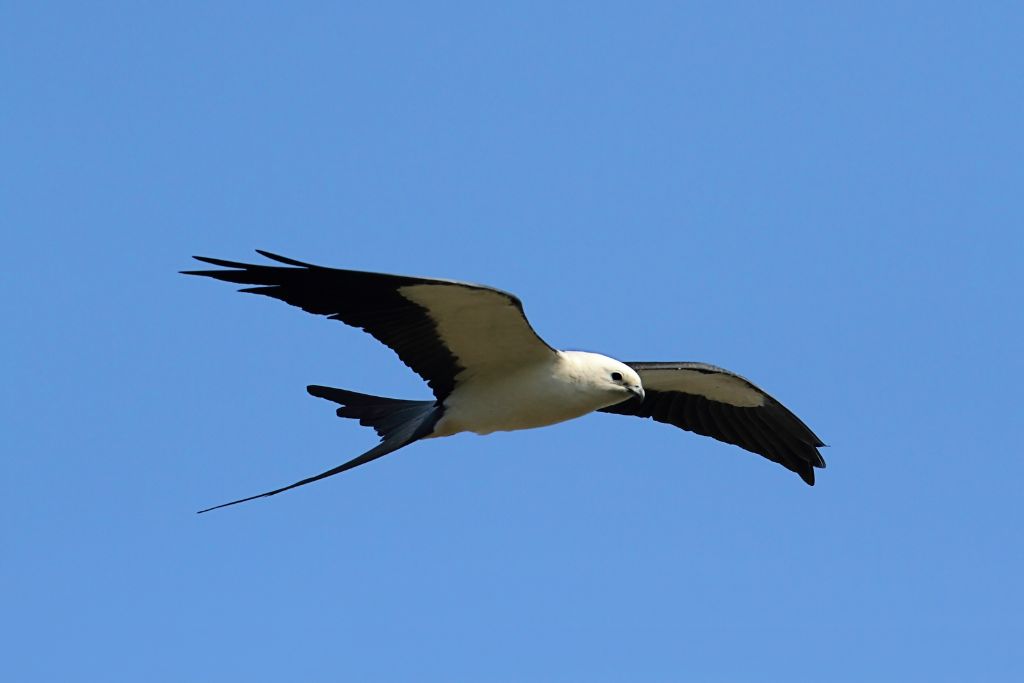
The graceful swallow-tailed kite has a 3 to 4-foot wingspan. Strong beaks allow these birds to be acrobatic and catch bugs in the air. Swallow-tailed kites nest in lofty trees near water with their twisted tails. Their graceful swoops and spins reveal their quickness when hunting. Insect-killing swallow-tailed kites keep Florida’s forests healthy.
21. Snail Kite (Rostrhamus sociabilis)
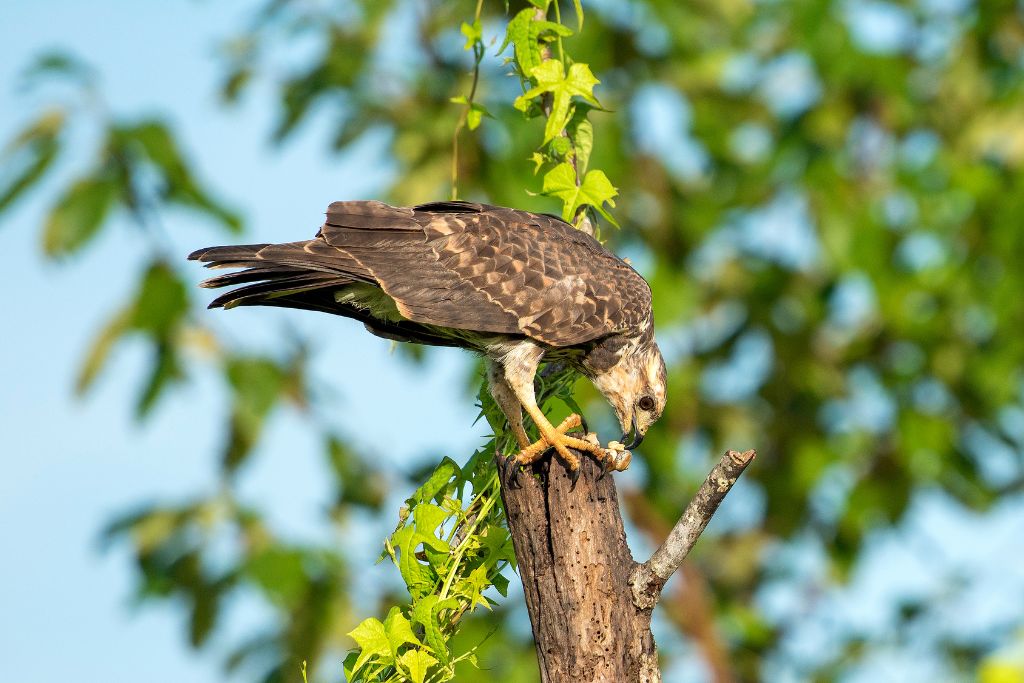
The snail kite is 3 to 4 feet long. These birds of prey have bent beaks that help them get snails out of their shells. Red-eyed snail kites build their nests in plants near water. They fly low over fields to catch snails with care. Snail kites keep the number of snails in Florida’s woods in check, which protects wetland areas.
22. White-Tailed Kite (Elanus leucurus)
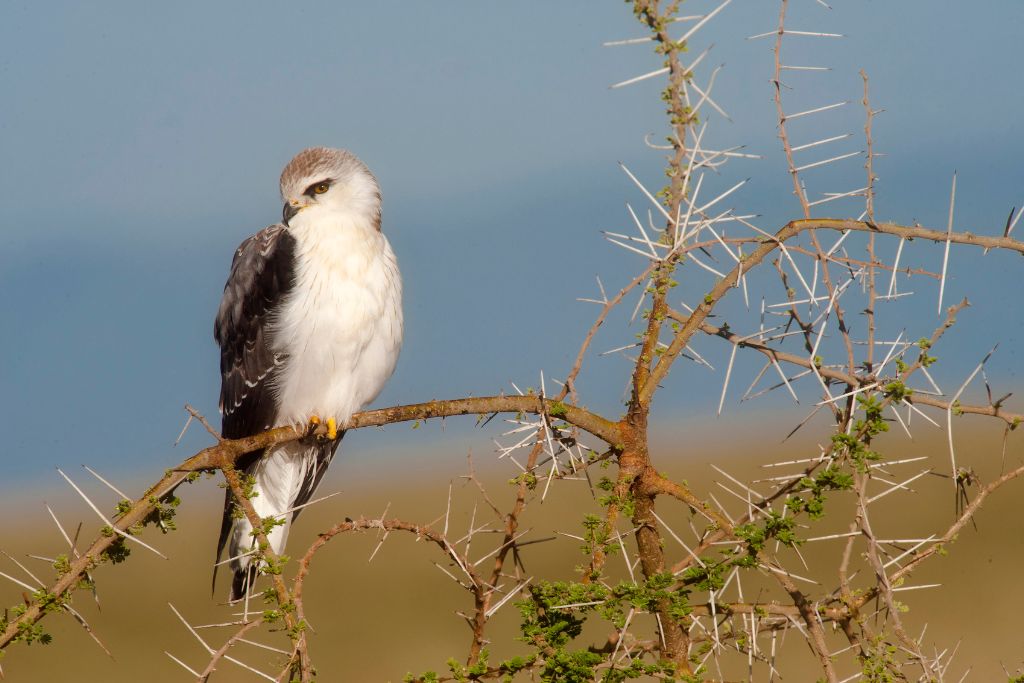
White-tailed kites are gorgeous with 2 to 3-foot wings. These kites eat small birds and mammals. They have red eyes and white feathers. It nests in trees, bushes, or the ground. Hunters hover and dive to collect food. Florida woodlands are balanced by white-tailed kites’ control of tiny mammals and birds. The environment remains diversified and robust.
23. Gyrfalcon (Falco rusticolus)
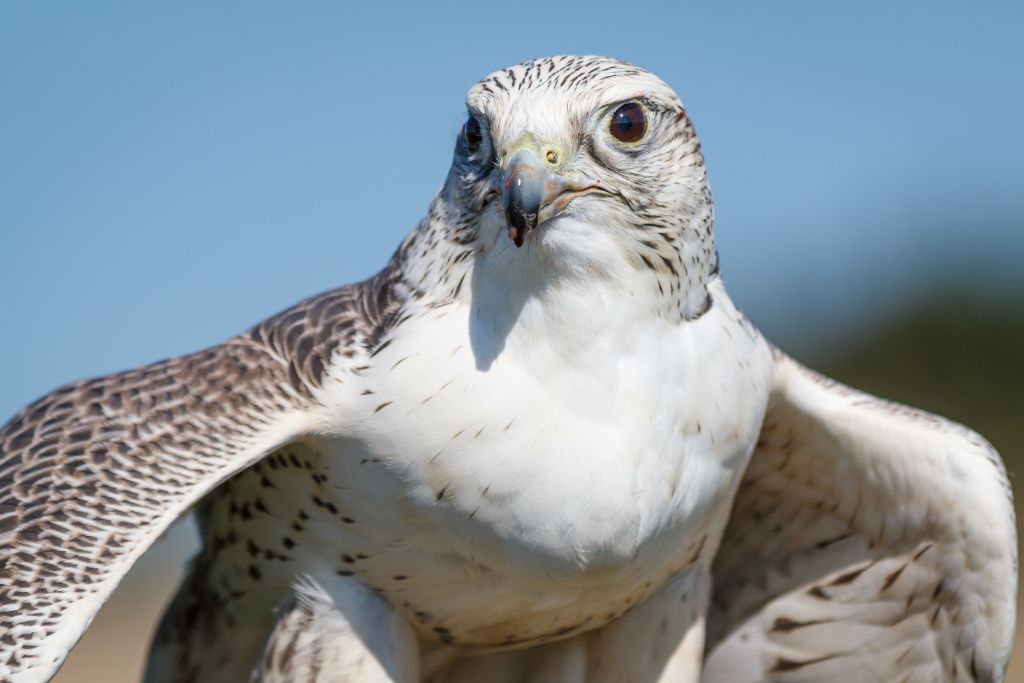
Gyrfalcons are lovely birds with a 4-foot wingspan. Strong hunters are used to living in frigid locations and eating birds and mammals. Dark feathers make gyrfalcons easy to spot. They nest on Arctic rocks and chase prey at fast speeds, catching them in the air. Gyrfalcons aren’t native to Florida, yet their importance in maintaining ecosystem balance shows how global ecosystems are interrelated.
24. Goshawk (Accipiter gentilis)
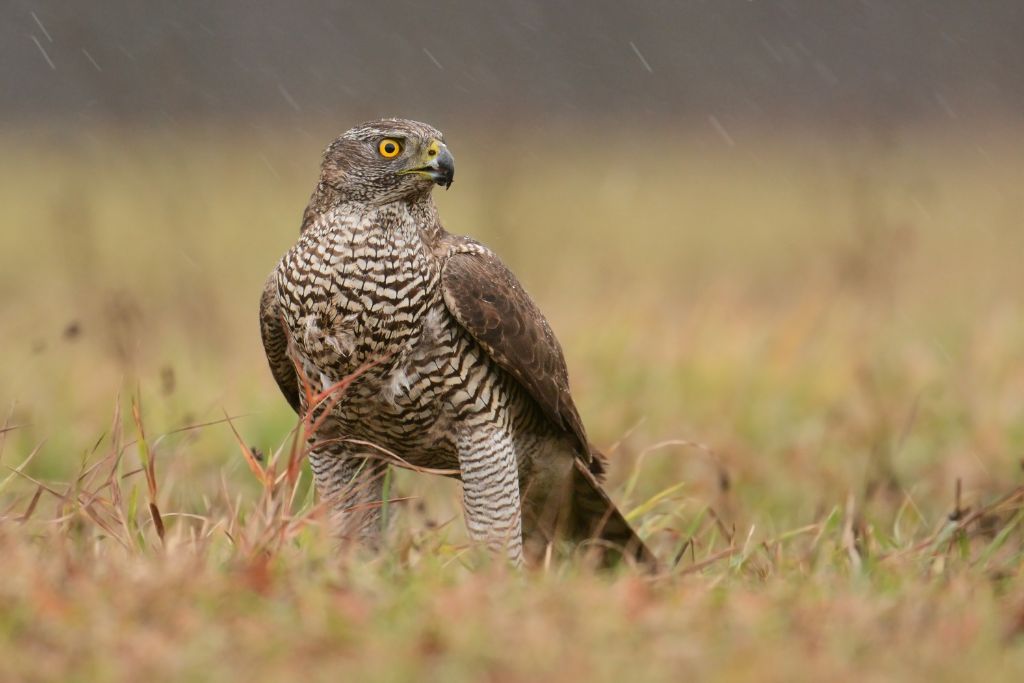
Goshawks are powerful with 2 to 3-foot wings. These birds hunt birds and small mammals well. As expected, goshawks nest in mixed and pine forests. Their feathers are banded, and they stalk animals and attack with formidable claws. Goshawks control birds and small mammals in Florida woodlands. Their environment remains diverse and balanced.
25. Common Buzzard (Buteo buteo)
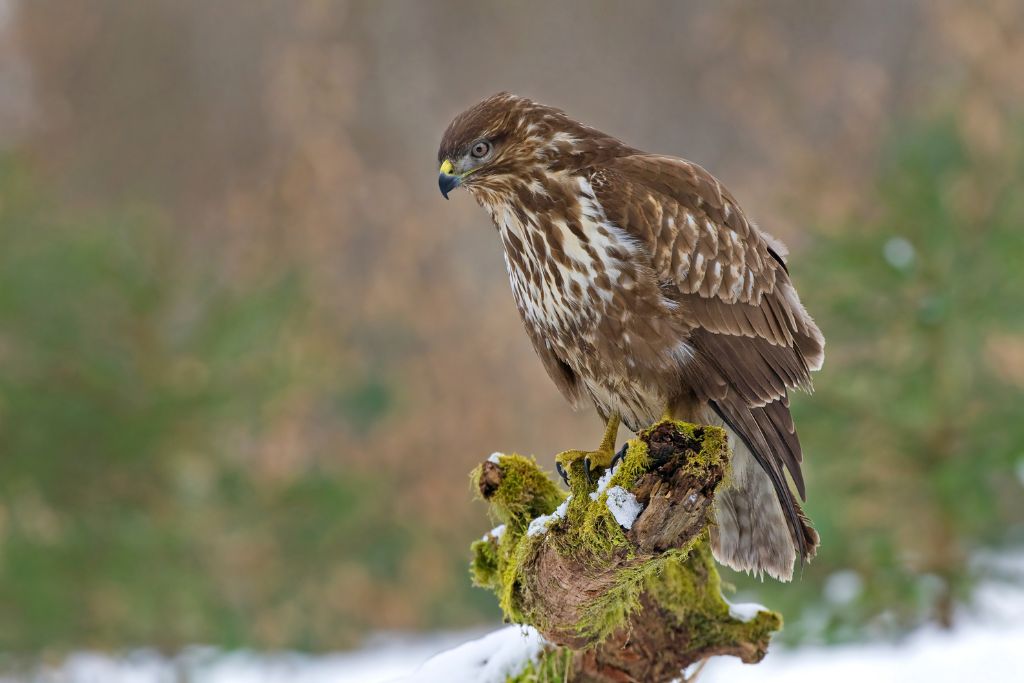
Common buzzards are flexible birds with 4 to 5-foot long wings. Birds, small mammals, and dead animals are what these raptors eat. The common buzzard’s nest is in trees or on rocks. They fly and use their sharp eyesight to find food. Common buzzards help keep Florida’s woods clean by eating dead animals.
26. Rough-Legged Hawk (Buteo lagopus)
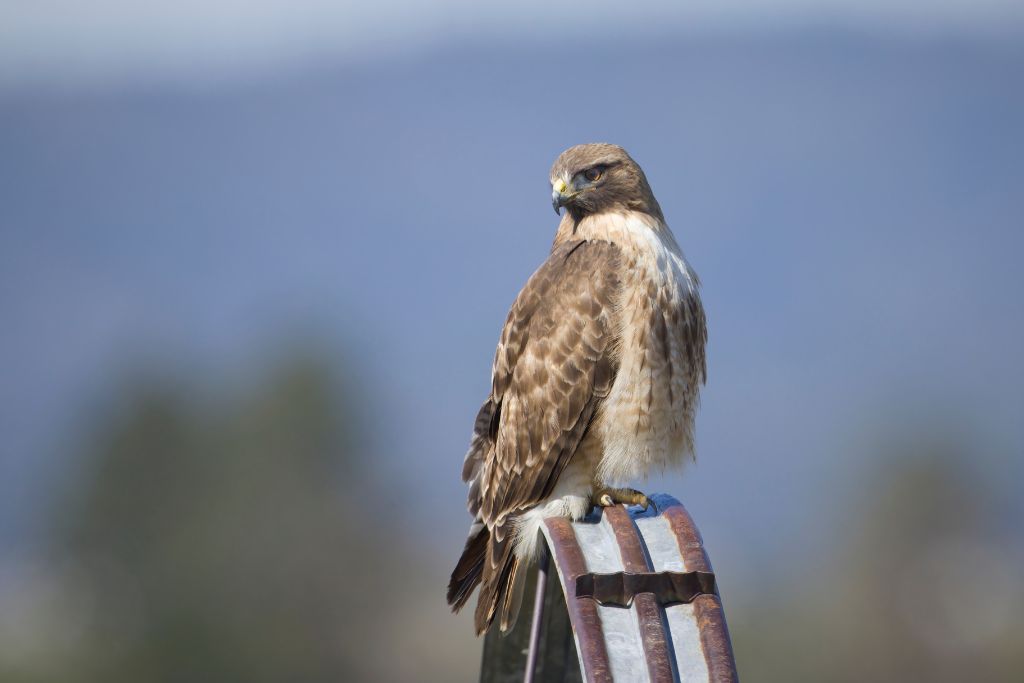
The 4 to 5-foot rough-legged hawk are cold-weather hawks that feed on tiny mammals. They nest in the Arctic steppe, hovering and falling to seek their prey. Rough-legged hawks are not native to Florida, yet their importance in balancing ecosystems reveals how global ecosystems are interrelated.
27. Northern Harrier (Buteo lagopus)

Northern harriers are 3 to 4-foot tall. From the ground, these raptors hunt small mammals and birds. Northern harriers, with their owl-like facial disc, seek moist nesting sites. Hunters find prey with strong hearing and low-altitude flight. Florida’s northern harriers regulate tiny creatures and bird numbers to maintain the woodland ecology.
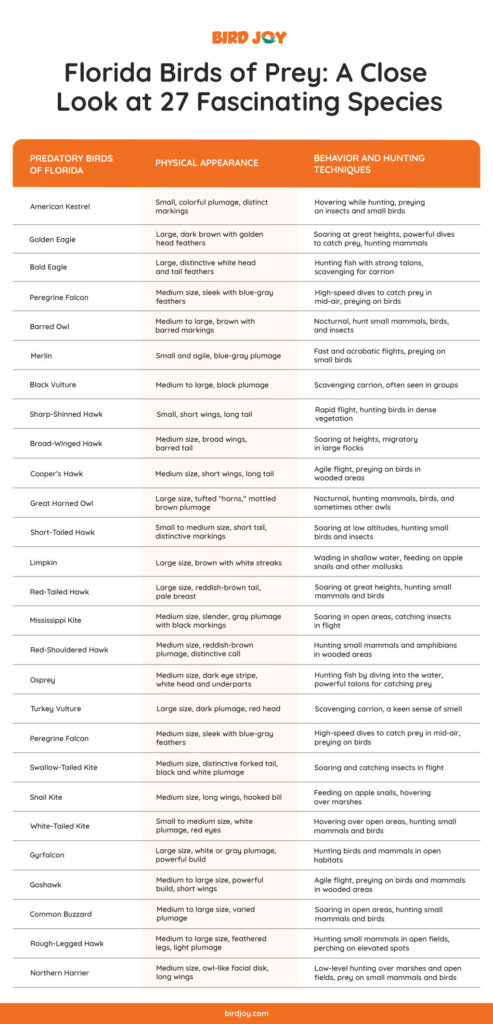
Final Thoughts
While we admire Florida’s carnivorous birds, we must remember their vital role in sustaining the state’s delicate ecosystems. With their varied sizes, forms, and hunting methods, these amazing creatures control animal and insect populations, maintaining a healthy habitat.
Appreciating and comprehending these amazing birds helps us connect with nature and appreciate the necessity of protecting their habitats. We must work together to preserve Florida’s rich avian legacy so future generations can see these magnificent birds of prey in their native settings. We can protect Florida’s skies and forests together.
FAQs
What is the Most Common Bird of Prey in Florida?
The red-shouldered hawk is the most common bird of prey in Florida. It lives in forests and wetlands.
What Bird is Florida Known for?
Florida is famous for the beautiful bald eagle, which lives in many parts of the state and is a sign of power and freedom.
What is the Most Protected Bird in Florida?
The swallow-tailed kite is the most protected bird in Florida. It is a species of worry because its habitat is being lost, so conservation efforts are very important for its survival.

